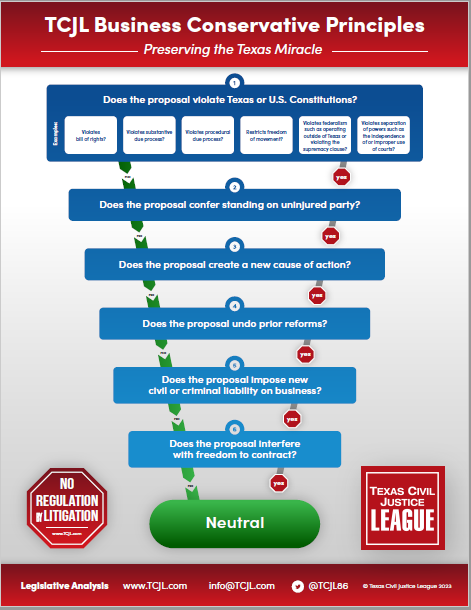 The Fort Worth Court of Appeals has ruled in favor of BNSF in a coverage and duty to defend dispute with Zurich arising from policies in effect from 1965 to 1974.
The Fort Worth Court of Appeals has ruled in favor of BNSF in a coverage and duty to defend dispute with Zurich arising from policies in effect from 1965 to 1974.
Zurich American Insurance Company, As Successor By Merger to Maryland Casualty Company v. The Burlington Northern and Santa Fe Railway Company, As Successor to Burlington Northern Railroad Company (No. 02-23-00245-CV; March 13, 2025) arose from a coverage dispute in which a trial court denied Zurich’s motions for summary judgment, which argued that the insurer did not have a duty to defend BNSF in the underlying personal injury claims. Those claims involved alleged exposure to asbestos resulting from vermiculite mining activities at Vermiculite Mountain near Libby, Montana. From 1965 through 1974, the mining company, W.R. Grace, procured insurance policies covering BNSF’s loading facility, where Grace loaded vermiculite onto railcars. The policies, which named BNSF as the insured, provided defense and indemnity for bodily injury arising from the ownership, maintenance, or use of the insured premises and its attendant operations. The policies further defined an “occurrence” as bodily injury or property damage resulting from “injurious exposure.” The policies excluded coverage bodily injury from “Products-Completed-Operations” and “operations on or from premises, other than [the River Loading Facility], which are owned by, rented to, or controlled by [BNSF].”
Around the turn of century, current and former residents of Libby sued Grace, BNSF, and others, alleging that they inhaled asbestos-containing vermiculite dust emanating from the mine and suffered asbestosis, mesothelioma, and lung cancer. Grace went belly up in 2001, leaving BNSF as the primary target of the litigation. That kicked off a series of disputes with various CGL insurers, which were eventually settled. When BNSF learned about the 40-year-old Zurich policies in 2005, it began tendering the Libby lawsuits to Zurich for defense and indemnity. In 2012, Zurich and other BNSF insurers settled with over 1,000 Libby claimants. Zurich ended up contributing $5.4 million to the settlement fund and notified BNSF that the total amount equaled $500,000 per year, the per-occurrence liability limit for each of the nine years the policies were in force. It also included $900,000 in defense costs. Zurich contended that these payments ended its obligation. BNSF, which continues to this day defending asbestos litigation in Montana, sought a declaratory judgment in 2014 in Montana disputing whether the Zurich policies’ per-occurrence liability limits had been fully paid.
In 2016, another insurer, Arrowhead, filed the underlying dispute against BNSF and other insurers in Texas. Arrowhead likewise contended it had paid out to policy limits and sought contribution from the other insurers. BNSF and Zurich filed crossclaims for declaratory relief and filed competing summary judgment motions. BNSF averred tht Zurich had a duty to defend and indemnify BNSF for ongoing and future lawsuits. Zurich argued that it had fulfilled its obligations under the old policies and, further, that it was entitled to recoup defense costs. The trial court ruled for BNSF, declaring that Zurich still had a duty to defend and indemnify, that each plaintiff’s alleged exposure in the Libby lawsuits constituted a separate accident or occurrence, and BNSF was entitled to recover from Zurich all defense costs and fees. Zurich appealed.
In an opinion by Justice Kerr, the court of appeals largely affirmed. As to Zurich’s duty to defend, the court looked to the four corners of the policy and the four corners of the Libby plaintiffs’ complaints (the “eight-corner rule”). The parties agreed that Montana and Texas laws governing policy construction were the same, the court performed a textual analysis. Zurich asserted that the Libby claims fell outside the scope of coverage because none of the plaintiffs claimed to have suffered injury while on the loading facility premises or on adjoining property. The court determined, however, that all Libby claimants pleaded into premises-operations coverage tied to the loading facility. Although some of the complaints might have been explicit, the court, following the rule that pleadings must be construed liberally and the duty to defend in favor of the duty, ruled that BNSF met its burden of establishing that the Libby claims fell within the policies’ coverage. The burden then shifted to Zurich to establish an exclusion as a matter of law, which it failed to do.
The question then became whether the trial court erred “(1) by declaring that ‘each [p]laintiff’s alleged exposure in the Libby Lawsuits constitutes a separate accident or occurrence’ and (2) by not determining that Zurich had exhausted the policies through prior liability payments up to the yearly per-accident and per-occurrence policy limits and therefore had no ongoing duty to defend.” Turning once again to the text of the policies, the court determined that the use of the terms “caused by accident” and “caused by occurrence” indicated an intent to include “not only causative events that are sudden, one-time events but also those that are continuously occurring” (citations omitted). Observing that “[b]ecause the [] policies included a $500,000 per-accident or per-occurrence limit of liability—and no policy had an aggregate limit of liability—resolving the counting issue (obviously) impacts Zurich’s duty to defend,” the court concluded that the Libby claimants alleged a single causative event.
“Two main tests exist for analyzing the number of accidents and occurrences,” the court continued, “(1) the cause test, which looks at the cause or causes of damage and (2) the effects test, which looks to the injuries, damages, or effects resulting from the cause” (citations omitted). Although SCOTX hasn’t given the final word (maybe it will be asked to in this case?), Texas intermediate appellate and federal court decisions point to application of the cause test. Still, the court noted that applying the test is tricky and heavily fact-dependent. In this case, the Zurich policies had a limited scope that covered only the premises of the loading facility. The Libby complaints all in one way or another plead into this coverage and “causally link[] their exposure to BNSF’s premises-operations, which we conclude to be the alleged proximate cause of the claimant’s alleged bodily injuries.” BNSF argued that each claimant alleged “unique exposure events,” in effect urging the court of apply the effects test, though BNSF characterized its argument as applying “the so-called liability-triggering-event version of the cause test” used in a Fifth Circuit decision having to do with contaminated bird seed. There the court determined that a dealer who sold the feed to eight different dealers resulted in eight separate occurrences for purposes of the policy at issue. But another Fifth Circuit decision applied the cause test to a runaway Mack truck case, concluding “that the driver’s uninterrupted, ongoing negligence causes a multi-vehicle accident.” Though it involved several vehicles, consequently, there was only a single “accident.” Similarly, BNSF continued operating the loading facility for years without ever breaking the proximate causation chain.
Finally, the court had to decide whether Zurich’s duty to defend terminated when it contributed to the 2012 settlement. The court held that the trial court was right, and that the settlement payment did not extinguish Zurich’s duty to defend. BNSF argued that the 1965 policy effectively created a perpetual duty to defend. The court didn’t go for this claim because “the language made clear that for so long as Zurich had a duty to defend, its obligation to pay for the cost of that defense was in addition to the liability payments.” Put another way, Zurich could not argue that the $500,000 per accident limit set off its additional duty to defend. The question was really whether what Zurich had paid so far to cover liability exhausted the policy. The problem for Zurich, however, was that the 2012 settlement agreement “did not itself state what Zurich’s contribution was going to be, and it did not limit or otherwise attribute Zurich’s settlement payment solely to BNSF’s premises-operations liability.” Although Zurich ultimately agreed to pay 30% of the total settlement, its attribution of $500,000 per year and $900,000 in defense costs simply doesn’t address the policy limits of liability. In fact, Zurich and BNSF agreed that “the settlement agreement was ‘intended to be and [was] a commercial accommodation among the Parties and shall not be construed as an admission of coverage under the … policies issue[d] by … Zurich, or an admission of liability to the BNSF Claimants or anyone else.” The trial court thus did not err by denying Zurich’s summary judgment motion on the exhaustion defense. Similarly, the court held that Zurich’s recoupment claim because it “failed to meet its evidentiary burden under either [Montana or Texas] law” of showing that the policies expressly allowed for a recoupment claim or that BNSF consented to it.
Clearly, the scourge of asbestos litigation continues to bedevil the companies still standing and their insurers. As we see in this case, 60 years have passed from the first Zurich policy to the date of the court’s decision. We will probably never know the total cost of the litigation (we don’t even know when it might end) or the foregone investment in economic and job growth that it has cost us all.








